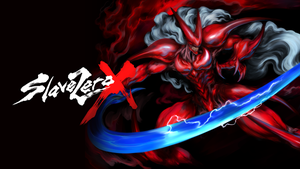How to Survive The IP Mania in The Game Industry 2016
Instead of buying an expensive IP, I recommend developers to create their own IP. Not only you will have a wider control of the development of the game and the content within, your IP can also generate much more money with the merchandise emerged from ...

As mentioned in my previous blog post, the concept of “IP” is dominating the mobile game space, even the entire game industry*. All the players in game industry have their opinion towards IP nowadays. A “strong IP,” of course, is a hot topic in these conversations.

Image credit: è‹äº‘COSæ‹æ‘„欢ä¹èŠ±çµ®ï¼Œç›¾å¨˜ @剑网3è´è´ æ‘„å½± @七味zoe @35ryo ,感谢 @剑网3å®‰çª @å–µè‰éž‹ @èœé¸Ÿå¦é™¢å‡‰å‡‰ çš„å‹æƒ…å助
While everyone is talking about IP, I would like to talk about that as well.
IP, or Intellectual Property, originally refers to a work or invention that is the result of creativity, such as a manuscript or a design, to which one has rights and for which one may apply for a patent, copyright, trademark, etc. In the game industry, IP comes across different meaning which is oriented to “brand” or “trademark;” and the concept of IP also includes the culture derived from the IP itself.
Everyone thinks popular IP is important for a game’s success. Take one of the most well-known IPs in China, Three Kingdoms, as an example; there are more than twenty listed mobile game featuring this IP. The players cannot even tell the difference between those games. Instead of blindly chasing the popular IP trend, I believe how to optimize the IP in a game is more important. In my opinion, the success of using an IP in a game fall into two key factors: cost effectiveness and usability.
.jpg/?width=700&auto=webp&quality=80&disable=upscale)
Three Kingdoms: one of the most popular cost effective IPs in China
Cost effectiveness including the cost of the IP and its coverage in the market. In layman’s term, how much it cost with how large the audience is. However, it is not a simple equation when it comes to the market. Without an efficient publishing channel to put your game with IP to the right audience, the IP itself can hardly acquire enough users to make it “worth”; saying, your coverage is close to zero. So it is more reasonable to count all kinds of factors when the industry players evaluate their cost effectiveness.
.jpg/?width=700&auto=webp&quality=80&disable=upscale)
One Piece: the most popular Japanese comics IP
When looking at how people react to IP in our industry, and the skyrocket of the cost of some of the IP in the market, I am a little bit worried about the situation. I hope both game developers and investors would think twice before they jump into IP investment. For example, they should look into the maturity of the IP. Whether the IP is growing, preserving, dying, or extending. i.e. the live cycle of the IP, it’s an essential element when evaluating an IP.
Let’s talk about usability. Usability is a concept applied to the game development, indicating what kind of game will be presented based on an IP. The complexity of the IP somehow decides its usability. Some IPs contain a completed design of the game world and numerous scenes and characters, which means the developers are given full play on the IP to present the ideal product. Other IPs could be very simple with only a main storyline with a handful of characters; that kind of IP might only suitable for simple casual games or only a specific type of game since there are not much to work on or the developer needs a lot of work to make it into the game they want. Therefore, different usability leads the game to different categories, and decides the cost of development more or less.
The high cost of the IP and the potential audience size could somehow imply the required high arpu for each acquired user. Therefore, the developer needs to create many gates or traps for monetization, which means the quality of the game has to be much higher than the industry benchmark, and the build-in high arpu could lead to more undesirable issues in the long run.
My last note here is that, instead of buying an expensive IP, I recommend developers to create their own IP. Not only you will have a wider control of the development of the game and the content within, your IP can also generate much more money with the merchandise emerged from the IP. In addition, if your IP is able to reach a point to become a subculture, every new merchandise not only can extend the income source, it also deepens the IP image in the entire market.
.jpg/?width=700&auto=webp&quality=80&disable=upscale)
Novels derived from one of the most popular original Martial Art game IP in China
References:
* https://www.linkedin.com/pulse/chinese-martial-arts-become-top-preference-china-mantin-3
See Original Blog Post on Linkedin
You can check out my other Blog Posts here
Seasun is a leading Chinese online games publisher focused on creating high quality games/game engines that push the boundaries of player experience in action entertainment. The company is also involved in small-medium sized investments for game studios worldwide. We have recently started up our U.S. studio in Redwood City, CA to create top quality content for the western market.
Seasun has shipped many successful titles, including the popular MMORPG series JX (http://jx3.xoyo.com/), the MMOARPG titles First Myth (http://fs.xoyo.com/index1) and CQ (http://cq.xoyo.com/), along with our FPS MAT (http://xd.xoyo.com/). The “JX” series has grossed more than $250 million and has achieved a daily active user count of 3.3 million. Our first game for the western market is Relics of Gods (http://rog.seasungames.com/). We are currently building a special team of highly talented people to create the technology for our next-generation MMOARPG at this studio.
Kingsoft, Seasun’s parent company, is publicly traded in the Hong Kong Stock Exchange (SEHK: 3888) with market value of 3.8 billion USD. Kingsoft has created 3 other subsidiaries alongside Seasun: Cheetah Mobile (NYSE: CMCM), WPS Office, and Kingsoft Cloud Service. Kingsoft has over 4,000 employees worldwide.
Read more about:
BlogsAbout the Author(s)
You May Also Like












